Was over at Cabela's buying some primers and always look at the used guns. This F.N. caught my eye, 16 ga. boxlock with side clips, Greener cross bolt, extractors, 30" Krupp Steel barrels. Decent wood, checkering worn but still there, cheek piece and so made for a righty. No dents, and like most European guns, had sling swivels, screwed to barrels, but removed from stock. Length of pull was 14 1/8" over a recoil pad. I'm sure that was added on here. Serial number 672?.
Used my phone camera for pictures, but don't have a way to download them. Lots of markings on flats, choke marking 17 on one barrel, couldn't see if it was 65mm or 70mm chambers.
Didn't see any marking as to grade.
Had gun put in back and I will go over and take pictures and see if it has any markings.
Anyone have any information on these guns.
I am thinking of taking a run to Hamburg. Good to know there's a nice 16 bore hidden in back. Sounds like what I'm looking for. Thanks for the heads up.
Whether either of you acquires the gun or not, pics would really be appreciated of the area ahead of the flats to see if FN, LLC, or another Beglian concern made the Krupp tubes.
Kind Regards,
Raimey
rse
Raimey, I won't be able to get there until Thursday. Taking the dog for a walk after some pen raised quail and chuckers.
When I go back I will also measure the bores using their CSP gage.
Also want to see if this qualifies for my C&R license and it would help to know date of manufacture.
JDW:
May have a date code so brush-up on your lowercase Greek letters. If a date code isn't present, pre-1924. I did the walkabout chasing leftover birds yesterday at Selwood, Alabama with a very young(12/13/14 month old) Britany,while concluding an "afternoon conference/meeting".
Kind Regards,
Raimey
rse
Raimey, thanks. I will get more info.
Those work in the field conference meetings are usually very productive. It's amazing how much more work is done "afield"
JDW, if it has 16 over a C in a diamond, then it's pre-1924. A more recent gun would have 16-65 or 16-70 on the flats.
Sounds like a pretty basic gun. FN made everything from very basic boxlocks to very nice sidelocks. But they're all good quality.
Thanks Larry. I'm a sucker for 16 ga. I had seen another one there a while back, stayed for a long time. That was a sidelock, ejector. I don't think it had side clips, but it had the Greener cross bolt.
I thought most guns that had side clips were a better quality because of the work involved in them.
All the information is on my cell phone camera, but like I said can't down load it. I am going to take a magnifier and see what I can see.
Here are the pictures of the barrel flats and some on the barrels. There is nothing written on top of barrels and nothing on the sides of the reciever. On the bottom of the receiver is Fabrique Nationale D'Armes Herstahl, Belgiuim.
The barrel picture, with Krupp came out blurry, but had Essen Krupp and maybe someone else can make out what it has.
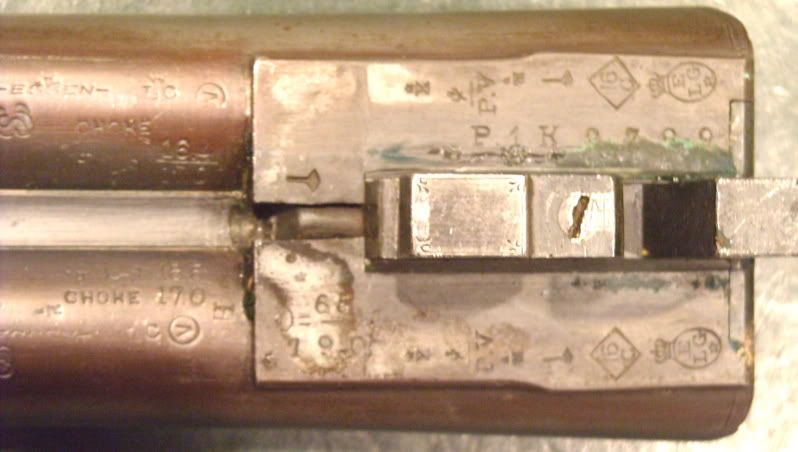


chokes were, right barrel .005 and left, .024.
I couldn't make out the numbers on the setting ring and don't know if they were .650 or .660. The bores were both +.012.
If the ring was .660 than it would be .672. which seems high to me, and there is a stamp between the barrels 672. Originally I thought that was the serial number, but the water table shows a 4 digit number.
The only information in the Blue Book was the two proof marks; Crown on top of oval, since 1893 and lion over P.V since 1924.
This also has the 16 over C in a diamond like Larry stated.
JDW:
Thanks for the effort. I'm not sure of the source of the "Crown" over "LC" or the "V" in a circle, which conjures up foreign tube proof but only due to the fact that Austria had a similar stamp with a "F" in the circle and I haven't seen any info that suggests such in Belgian proof info. I guess "PJ" to have been a mechanic?
Kind Regards,
Raimey
rse
Hello All
VERY interesting !!
Here is a picture of my GECO

Enjoy the evening
Mike
This FN was proofed no later than June 1924. The Lion Rampant (not a crown) over PV was introduced for military rifles of 8mm & smaller in 1898 & then applied to the supplementary smokeless proof for shotguns in 1903. 16/C in a diamond was begun in 1898 & replaced by the gauge & shell length, thus 16-65 inside a stylized C following June of 1924. The mark D=65/19.0 for length of chamber & dia of chamber just ahead of the rim C'Bore was likewise in use from about 1892 through June of '24 & applied only to those guns receiving the smokeless proof. This gun was thus proofed no later than June 1924. Info from A Baron Englehardt, Gun Digest article.
Mikes Geco is post June '24. you can observe the different guge/chamber length mark there. Prior to '24 guns carrying only the black Powder marks did not have chamber length marked, only the gauge thereof.
The date stamp on the Geco indicates it was proofed in 1927.
Miller,
The nitro proof mark was introduced in 1898 for military arms. They started using it for all arms in 1903.
http://damascus-barrels.com/Belgian_All_Proofmarks.htmlPete
Miller, as always thanks for the info. As for the bore size, what is your opinion? Is is just a coincidence that the 672 is stamped on the barrels and did PJ do it, and what would the correct bore size be then, .662 or .672. Also choke markings, 16.0 and 17.0, I can't find any information on them, but have seen them for other European guns.
Pete, thanks, I didn't see your post,was writing this one.
JDW:
The "672" probably is the assembly number and if so will be found on other parts. I believe it was in January of 1897 when the choke stamps as seen on your example were implemented. The top number is the diameter at the muzzle while the lower number is the measured diameter at 22cm from the standing breech. I'm not sure, but the mark may have been applied before final proofing and if so, then an enlargement of less than 0.2mm was allowed for final polishing without reproof. I still hold that "PJ" was the mechanic at FN. Nice little puzzle with Krupp steel tubes.
Kind Regard,
Raimey
rse
Raimey, thanks also for your valuable input and information.
They are asking $375.00 for it.
Has the Anson type for-end release and has double ring engravng around the side clips on the barrels. Except for the swivels holes in the stock, two different locations and the swiwels on the barrels (screwed on) it is a nice handling gun. Mounts nice with the raised cheek piece.
JDW:
I don't know that I added much but glad to do it.
Peter:
Would Partheons(PJ) have had any input on this example? Do you know if Joseph Janssen, one of the original founders of FN in 1889??, had a son with the first initial of "P"? I don't think it would have been a decendent of Gustave Joassart as in 1917 he caught a rail to Paris. Did Lucien Clement use a stamp of "Crown" over "LC"? Last how do you account for the spangled "x" controller's stamp? Once again all the marks make a very interesting puzzle.
Kind Regards,
Raimey
rse
David;
I would totally agree with Raimey as to the likely meaning of the 672. both bbls seem to have 17.0mm bores which converts to .669". I cannot read the upper numbers real clear with my old eyes but appear to be 16.4 for the left bbl & 16.6 for the right one. This would thus represent .6 & .4 mm constriction respectfully or in English .024" left & .016" right. for a 16ga I'd call that a modified & an improved modified or in European terminology ½ & 3/4 chokes.
Don't really recall now what you said about condition, but if in any condition at all I would think this would make a great shooter & certainly be worth that. What else could you buy these days for that amount of money??
Miller,
The nitro proof mark was introduced in 1898 for military arms. They started using it for all arms in 1903.
That is essentially what I said. Only difference is info I have would indicate that in 1903 Smokeless proof for shotguns was still considered an option in Belgium so it will not necessarily be found on "ALL" shotguns. It was thus used only on those arms requiring or requesting smokeless powder proof at that point in time.
Gentlemen, thanks so much for your input. I know nothing of the European or British markings for proof or chokes, only what I might find in the Blue Book or on the Hallowell site.
The one symbol that looks like a key, states in there that it is for final proof.
Miller, your right, where can you find a gun for that price. Like I said, looks to be a decent made gun, and I do like 16 ga.
The left barrel stayed the same at .024 but the right barrel was honed and now is .005.
A Francotte peddled example from the same period with a "PJ" stamp(from Littlegun.be):

Kind Regards,
Raimey
rse

Another example from the same period but interesting that the left chamber is 65mm while the right chamber is 70mm.
Kind Regards,
Raimey
rse
Raimey, question, if the chambers on that gun are 18.7mm=.7362 inches, would you have to have the chambers opened because todays brass,zinc, head is measuring between .738-.742, resized and could be .740-.744 un-sized. I would imagine that earlier European shell heads were smaller.
On the one I was looking at converting 19.0mm is .7480 and that is larger than L.C. Smith chambers at .745.
JDW:
I'd want some ground truth on it, i.e., actual measurements and try some of the 65mm cartridges that are out there. I measured a few diameters and you are correct that the average floats arond 0.740". I've seen some very tight German chambers but none that wouldn't accept production cartridges. Now this is with the exception of early 10 bores with current RST production where the brass seems just a tad large. I wouldn't consider opening the chambers at all though.
What's the weight stamp of the barrels? 1.278 Kg?
Kind Regards,
Raimey
rse
Raimey, you might have misunderstood, the chambers on the gun you posted were 18.7mm which equals .8362. The chambers on the one I am looking at are 19.0mm=.748
I measured some Gamebore 16 ga and the hulls are Cheddites. They were fairly consistant at .741. Loaded shell measured 2 1/8" with a fold 6 crimp.
I won't get a chance to look at it today, maybe later this evening before they close, and I will look at the weight stamp.
Yeah, I'm con-fused and will have to located my calculator after I see what the ducks have to say about it. Does 18.7mm = 0.8362"?
I think it is a neat example by the way and you should let it come home with you.
Kind Regards,
Raimey
rse
Now, I'm getting dyslexic, 18.7mm equals .7362, that's what happens when you type something and don't proof read it. I typed it right in the first post, but hit the 8 instead of 7. Sorry.
I have a French sxs that is a little tight. I have to use Fiocchi hulls in it. I shoot Polywad vintagers in it, and they load Fiocchi hulls so it has been no concern for me.
The 65 indicates 2 1/2" chambers.
Went over and picked gun up. The markings on the barrel "Fluss Stahl-Krupp-Essen, I'm guessing mean Fluid Steel. Few markings that were small, looked to be a crown with LC under it, star with x under that, star with M under. Also what was covered with grease and hard to read P 1 K 278.9. Raimey mentioned that in his post and I guess that means weight of barrels at 2.818 lbs.
Gun weighs 6 lbs. 1 .8 ozs. 1 1/2" DAC and 2 3/8" DAH, 14 1/8" over 1" recoil pad. Checker is 24 lpi. Original choke markings were 16.4/70 (.646) right barrel and 16.6/70 (.653) left barrel. The right barrel is now .005, so .010 removed. Bore 17.0=.669 reads .672 on bore dial gage.
Again thanks to all to greatly helped on this. Like I said, I am a sucker for small bore guns, and my main interest is "elsies", but couldn't resist it.



Sounds like a good all around upland bird gun.
The Crown with the LC is the mark of Lucien Clement, a major barrel supplier. The Fluss-Stahl is also registered to Clement. It is usually seen as Hammered Fluid Steel or Fluid Steel with 2 crossed hammers. He registered this March 5, 1903.
A graphic of barrel straightening from Lucien Clement's shop.
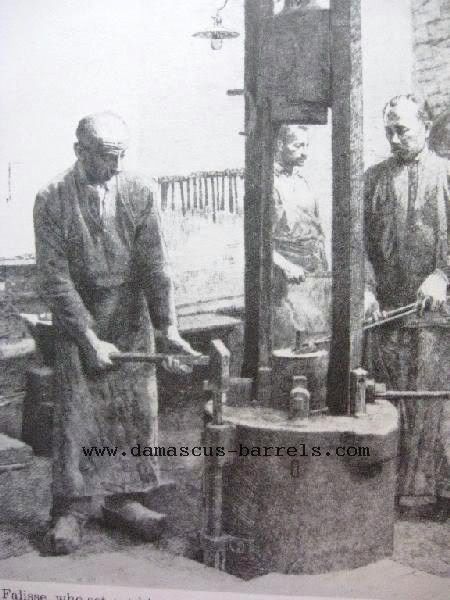
Pete
Raimey, different chamber lengths? That is indeed interesting!
Sounds like a nice gun, JDW. Looks as if it's seen some use, but it could either be a good "project" gun, or shoot as is if mechanically OK. Nice weight, dimensions and chokes for upland hunting.
Pete, again, always a pleasure to read your comments and expertise.
Larry, where did you see two different chamber measurements?
It has seen use, I will re-blue the barrels and re-finish the wood, maybe try to re-checker, maybe.
Larry was talking about the gun Raimey posted as an example, not yours. Looks like a fun little shooter.
After I read what I posted, I realized that Raimey did show a picture of a gun with two different size chambers, sorry Larry.
Peter:
Thanks for searching and confirming my suspicisions on the "Crown" over "LC" being for Lucien Clements. I'm amazed by those safety-toe shoes. But the encircled "V" still plagues me.
JDW:
Did you attempt to drop some cartridges in and what blueing method do you use and how long does it take?
Kind Regards,
Raimey
rse
They were wearing safety shoes even before OSHA.
Raimey, I didn't try any shells in it. The chamber diameters should be fine.
I use the rust-blue method, using Laurel Mountain Forges Barrel Browner. I might have to wait for the weather to get warmer to have enough humidity. Even in the heated box this time of the year might not be enough humidity.
As for how long it takes, usually it might take between 6-8 rustings.
Again thanks for all of your help. It still amazes me on the wealth of information here.
Those shoes look to be "sabots". Good protection if you drop something, but not fireproof.

Those shoes look to be "sabots". Good protection if you drop something, but not fireproof.

Spot on Larry. They are indeed sabots. Common wear for many decades in Belgium by workers. I would not want to stand in them for 10 - 12 hours a day.
There is a modern innovation in that image. A single electric light hanging from the ceiling.
Pete
I have a FN SXS that is a twin to yours, with the exception that it doesn't have a cheek piece. It's a 16 gauge with 30" barrels, that weighs 5lbs. 14 oz.
It has had barrel work by a previous owner (chambers and chokes)
it is a terrific bird gun despite its long barrels.
I tried to post pictures of it following the instructions.
How do you post multiple images?
Pete
Pete:
Just copy another image right below it. Is that an "ACL"/"ACM"/"ACN" encircled and what is the stamp just above that? Also there is another encircled set of initials on the right tube near the lower rib? By the scribbling("70" beside chamber info & "IC" & "Mod"), someone has lengthened your chambers as well as noted, or modified, the chokes(I now see that in your post).
Kind Regards,
Raimey
rse
ellenbr, that is, AC over
CI They are in a circle.
just above that is what appears to be the letter V .
the initial on the right tube near the rib looks like the letter K with a star over it. (it has no circle).
Pete
Pete:
Thanks and there's that encircled "V" again. It may be the pic & my eyes but there looks to be an encircled "JL"? on the right tube just above the encircled "V". An encircled "AC/CL" may just note yet another "Acier Cockerill" craftsman user who was sourced by FN?

Kind Regards,
Raimey
rse
I don't see another mark above the v.
I have to leave the house but when I get back I'll see if I canpost better pictures and some more info I have.
Pete
Since IC and Mod are scratched on the barrels, the guy who did the modifications might just as well have scratched 2 3/4 instead of 70.
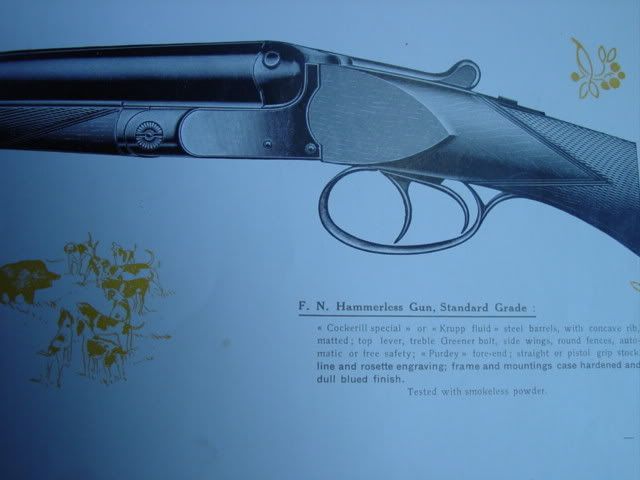
I am having an awful job trying to post these pictures but if you are interested I'll continue.
Pete
Pete, I am interested in seeing more pictures. That picture looks like mine. Could you put a picture with more of the description and whatever else you might have.
They are calling it Cockerill special.
I have a few questions; When I went to pick up gun, I noticed it was slightly off-face. Got it home and checked it with feelers and is .003 loose. Looking at area of hinge pin, I see a center pin, so I get a drift and lightly tap it and feel that it is moving. Drive it all the way, and find out it releases the cocking levers. Take the fancy screw plates off, and see inside that the hinge pin has a slotted head also. Notice that I can turn it slightly, but what is holding it. Notice on end of receiver a retaining screw, take it out and now I can turn hinge pin and take it out. Mike it up and I can see about a .002 difference. Rotated pin 1/4 turn and marked for a new pilot hole for what I will call anti-rotation pin , Try barrels and no movement. Job done. Replaced the other hardware and assembled and everything is tight.
Question, is this common for European guns to have, and do any American guns have this feature. If not were the Europeans the only ones smart enough to know that wear will occur and the hinge pin will have to be rotated or replaced?
The more I look at this standard grade gun, the more I like the workmanship and quality.
Another question, in measuring the different pieces, and gong to my decimal/metric chart, the sizes are not even increments. Example retaining pin for cocking levers. .139=3.53mm, hinge pin diameter .334=8.48mm.
Many years ago I worked with machines set up with Metric dials because that's how the prints were. They gave the decimal in quotations, but in my opinion using the metric machines was easier. We had machines in both 1 for 1 and 2 for 1. The 1 for 1 was nice for close tolerance work.



I think I will like this gun, but I still like the "elsies".
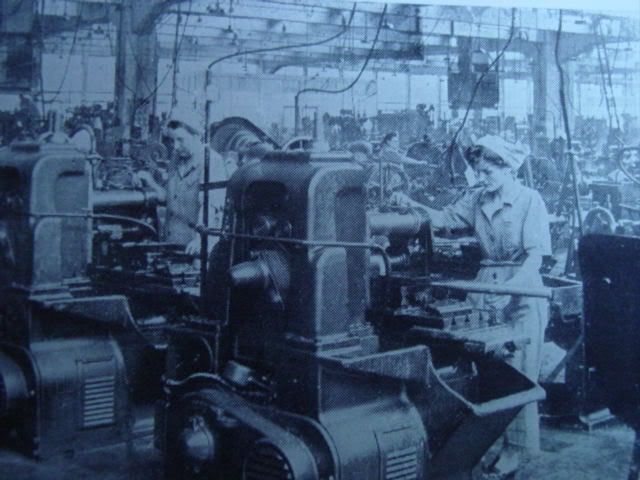
This is a picture of the FN factory that made the gun.
I got a lot of these pictures from Robert Chambers who used to post on this site.
I don't know much about the hinge pin, but I'll agree that it's a very well made gun.
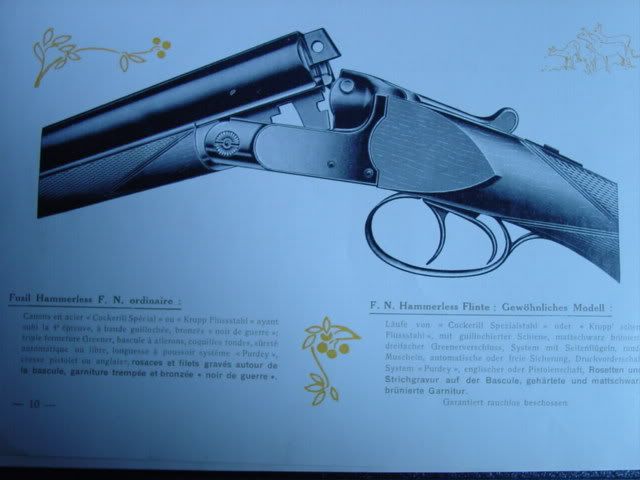
Another picture of the gun.
Pete
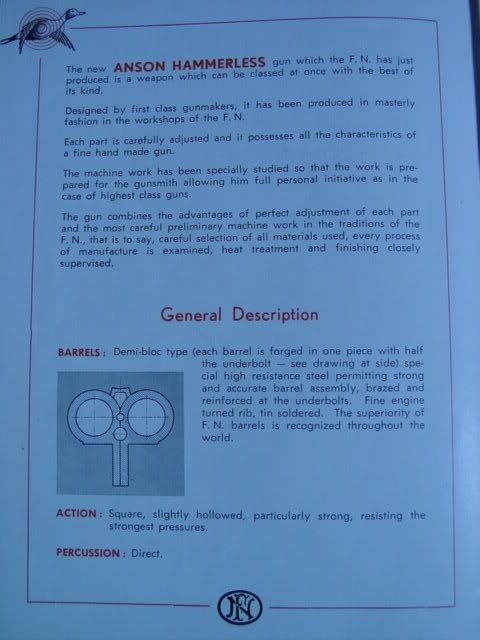
Another picture.
Pete
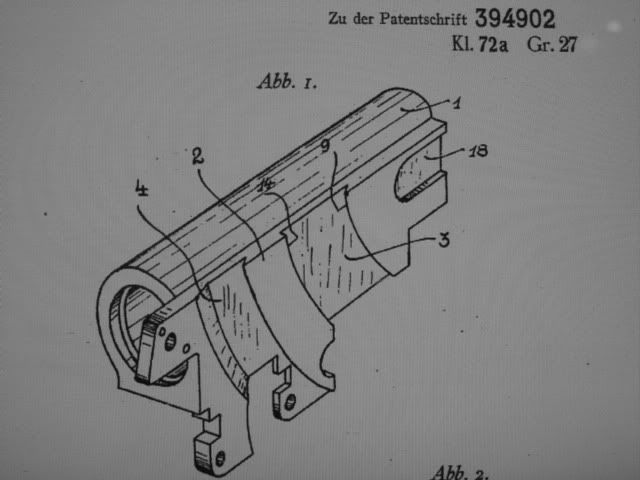
And yet another picture from the FN factory illustrating this gun.
Pete
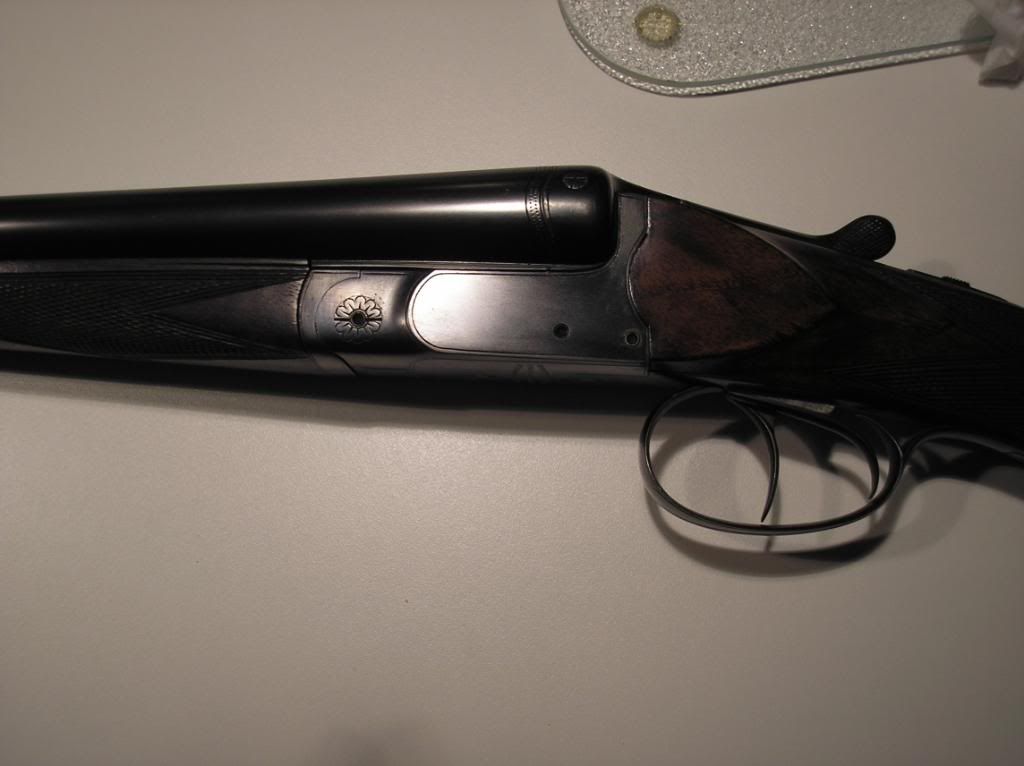
This is my gun. It's in very good condition except for the graffiti on the barrel flats.
Pete
Pete, yours has nice barrel bluing. Mine has to be re-blued. Except for the sling swivels, which I took off it is a nice gun. Does your have Krupp barrels?
Could you post a picture of the first one so that all the writing is in it.
Thanks.
Pete, that "Anson Hammerless" page is an unusually good translation from the French. Much of the time, when you read translated material on guns, you can almost hear the accent as you read. The usual problem is that the person doing the translation, while perhaps fluent in both the original language and the one he's translating into, doesn't know "gun lingo". Thus, you end up with a lot of French guns with sideclips that have "wings" in the English translation. Really light, I guess.

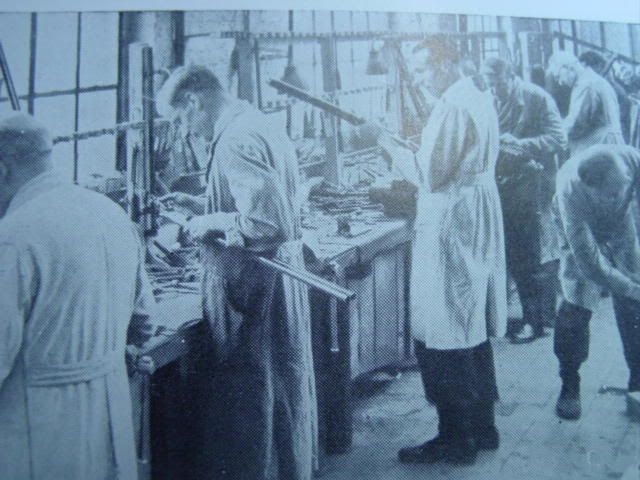
Gunsmiths at FN working on the SXS.



















